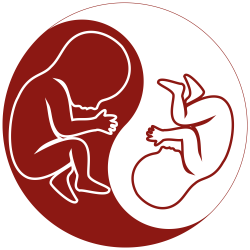Twin Anaemia Polycythemia Sequence, or TAPS as it’s better known, is a rare form of Twin to Twin Transfusion Syndrome (TTTS)
Cause
It is caused by tiny surface connections in the placenta, less than 1mm thick [1]. Red blood cells pass from the donor twin to the recipient twin at a rate of around 5-10 millilitres per day (that’s less than half an ounce) [2]. The transfer happens slowly, and over time, it causes the donor twin to become chronically anaemic, and the recipient twin to become polycythemic [3].
Think of this like one twin having blood like rose wine, or Kool-Aid, and the other twin having blood as thick as ketchup or molasses. You can also think of TTTS is the result of a combination of too high and too low blood volume while TAPS is about too high and too low blood concentration [4].
Symptoms
Unlike TTTS, what’s unique about TAPS is that it does not present with fluid imbalances or other symptoms [5-7]. There are some recorded symptoms that can be related to TAPS, like a bright placenta on the donor twin’s side (called an echogenic placenta) [8], and a starry sky liver in the recipient (a liver that has bright, white spots on it in ultrasound images) [9], but these are not required additional symptoms and often TAPS will be the only issue.
Progression
As the disease progresses, things can become worse for the donor, where the chronic anaemia can lead to hydrops (large amounts of fluids building up in the baby’s tissues which causes swelling), and for the recipient, things like blood clots and heart issues from pumping around the thicker blood are a real risk [10].
TAPS happens in 2 ways:
- Spontaneously
- After laser surgery for TTTS (known as post-laser TAPS). Around 16% of TTTS cases treated by laser surgery will develop TAPS [11]. In these cases, it is caused by incomplete cauterizing of the vessels in the placenta. It is very common for the TTTS donor to become the TAPS recipient, and vice versa [12].
Chances
In its spontaneous form, it happens around 6% of the time [13]. This is a 1 in 16 chance of developing it. We don’t know what causes it to happen, but thankfully, it is very treatable.

